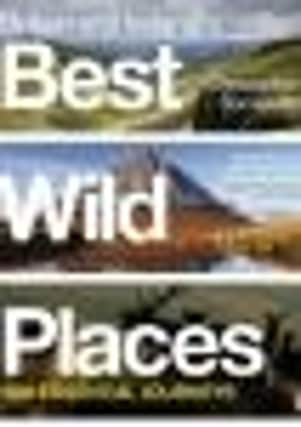Book review: Britain and Ireland’s Best Wild Places by Christopher Somerville


So what better time to join Christopher Somerville, the man behind BBC2’s bestselling Coast series, and let him seek out for us the hidden corners of Britain and Ireland on a magical journey of discovery?
This captivating and comprehensive guide includes 500 of Somerville’s favourite wild places in fields, lanes, forests, mountains and coasts and encapsulates our beautiful landscape in all of nature’s moods.
Advertisement
Hide AdAdvertisement
Hide AdSomerville is a man with a remarkable passion for the outdoors; his enthusiasm is truly infectious and his descriptions are imbued with an unusual lyricism.
As he travels the length and breadth of Britain and Ireland, he shows us where to discover Scottish mountains covered in rare Ice Age flowers, storm-battered Welsh headlands, English wildflower meadows and uninhabited Irish boglands.
And hidden among these deliciously isolated corners of the wild are rare and hidden gems like the medieval Green Men spewing leaves, haunted chapels in forgotten woods and remote villages where pagan rituals are still observed.
In a country which we thought had barely a corner left untouched, it’s heartening to learn that there are, in fact, still hundreds of essentially undiscovered places that still retain an extraordinary amount of natural vigour and variety.
Advertisement
Hide AdAdvertisement
Hide AdAnd it’s astonishing that so many of these places are packed into our own North West area of England.
As Somerville rightly points out, there is more to this corner of the country than just the rugged fells of the Lake District.
There are the remote Pennine hills, the old mill towns that huddle in the steep valleys and the Lancashire coast with its vast skirt of mudflats, estuaries and sand dunes presenting a wild aspect few passers-by on the M6 would even dream existed.
Among the Lancashire entries are the remote foresters’ houses at Whitendale in the Forest of Bowland, the ‘moody, temperamental paradise’ at Ainsdale sands on the coast near Southport and Sambo’s grave, the last resting place of a young Afro-Caribbean man at lonely Sunderland Point peninsula near Morecambe.
Advertisement
Hide AdAdvertisement
Hide AdAlso featured is the marshy and ‘impressive’ Ribble estuary which surprisingly encompasses around 50,000 acres and which, says Somerville, is one of the least frequented places in the book because it is such a challenge to reach its outer regions.
Seabirds, wildfowl and waders, he says, are drawn here as if by gravity making it a five-star venue for bird watching.
Further afield is the fascinating and little known Vampire’s Grave in the churchyard at Dent in Cumbria, the stunning natural limestone pavements at Hutton Roof Crags near Kirkby Lonsdale and the mighty Cautley Spout waterfall in the Howgill Fells.
With cautionary tales about how our countryside is being threatened and a reminder that our landscape is a vital part of our history, this is a book that both entertains and informs.
Advertisement
Hide AdAdvertisement
Hide AdA lot of thought has been put into the format with a vast selection of photos, reader-friendly sections on every area of the country, OS map finders and road directions to every location.
There is also a very useful list of symbols alongside each entry helping readers to identify, among other things, local flora and fauna, historic sites, urban or industrial settings and the kind of terrain walkers can expect to find.
Within the 544 pages of this magnificent guide, there are fascinating new facts to tempt you back to places you already know and plenty of interesting tales to lure you to pastures new.
And as Somerville almost takes you by the hand and guides you to the spot, there is simply no excuse not to follow him.
(Penguin, paperback, £19.99)